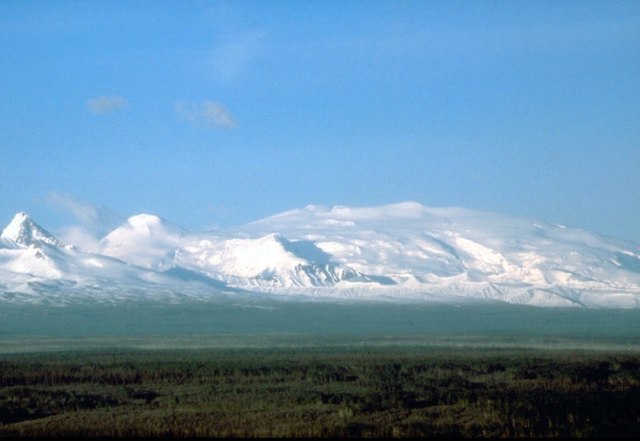Mount Wrangell, in Ahtna K’ełt’aeni or K’ełedi when erupting, is a massive shield volcano located in Wrangell-St. Elias National Park and Preserve in southeastern Alaska, United States. The shield rises over 12,000 feet (3,700 m) above the Copper River to its southwest. Its volume is over 220 cubic miles (920 km3), making it more than twice as massive as Mount Shasta in California, the largest stratovolcano by volume in the Cascades. It is part of the Wrangell Volcanic Field, which extends for more than 250 kilometers (160 mi) across Southcentral Alaska into the Yukon Territory in Canada, and has an eruptive history spanning the time from Pleistocene to Holocene.
Mount Wrangell, 1987
Mount Wrangell and Mount Zanetti from Willow Lake at 1600 ft (500m). Although Mount Wrangell rises over 12,000 ft (3700 m) above this viewpoint, its great height is masked by the extreme width of its shield-like form.
Mount Wrangell as seen from Chitina Airport
A shield volcano is a type of volcano named for its low profile, resembling a shield lying on the ground. It is formed by the eruption of highly fluid lava, which travels farther and forms thinner flows than the more viscous lava erupted from a stratovolcano. Repeated eruptions result in the steady accumulation of broad sheets of lava, building up the shield volcano's distinctive form.
Mauna Loa, a shield volcano in Hawaii
An Ancient Greek warrior's shield—its circular shape and gently sloping surface, with a central raised area, is a shape shared by many shield volcanoes.
ʻAʻa advances over solidified pāhoehoe on Kīlauea, Hawaiʻi
A pāhoehoe lava fountain on Kīlauea erupts







